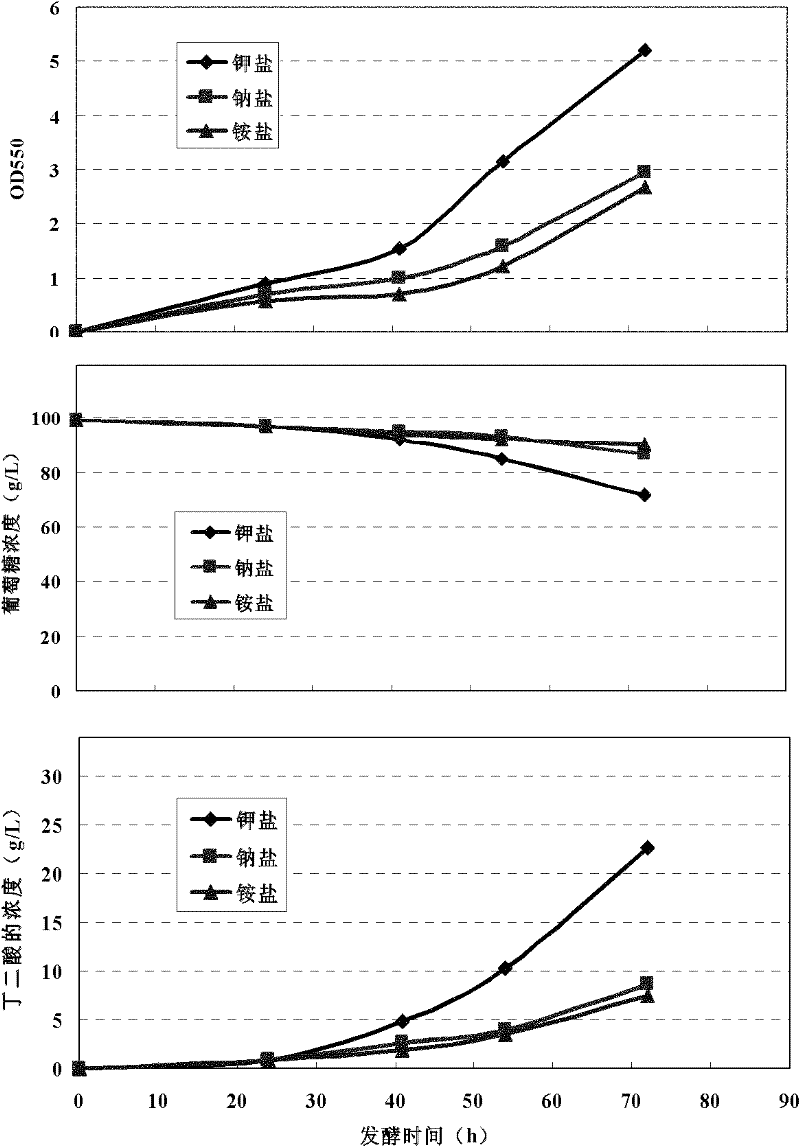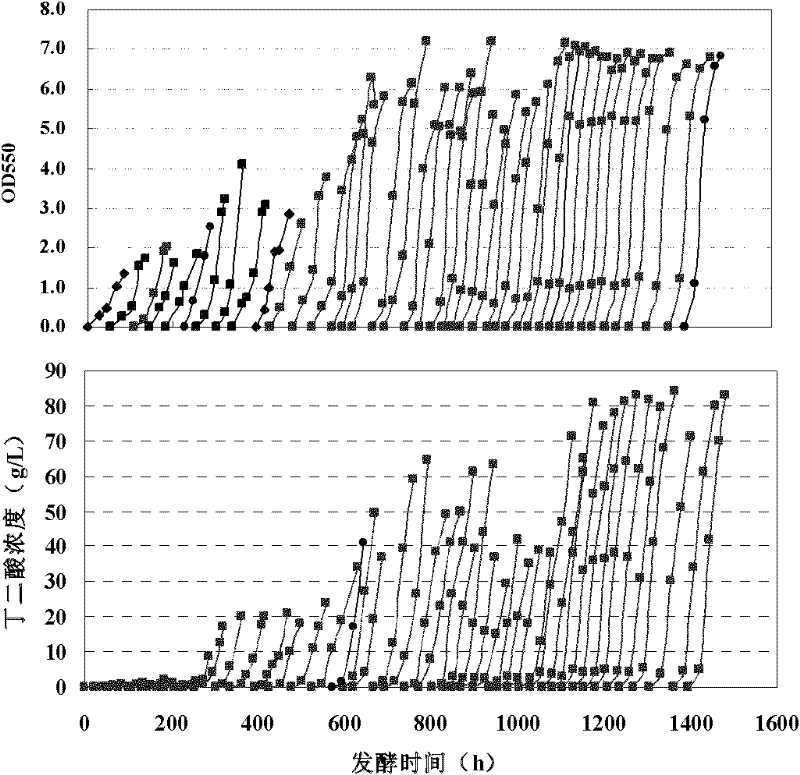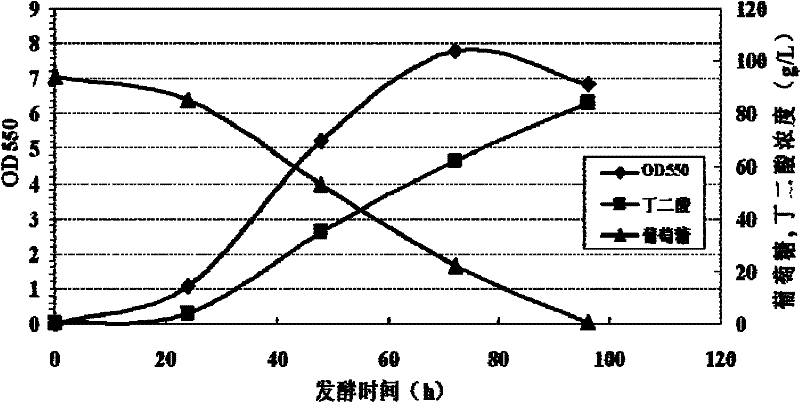Escherichia coli genetic engineering bacteria for producing succinic acid and construction method as well as application thereof
A technology of genetically engineered bacteria and recombinant Escherichia coli, which is applied to the field of Escherichia coli genetically engineered bacteria producing succinic acid and its construction and application, can solve the problems of low feasibility, increased cost of fermentation raw materials, increased equipment construction and operating costs, etc. question
- Summary
- Abstract
- Description
- Claims
- Application Information
AI Technical Summary
Problems solved by technology
Method used
Image
Examples
Embodiment 1
[0057] Embodiment 1, the construction of Escherichia coli genetically engineered bacteria HX004
[0058] The construction of Escherichia coli genetically engineered bacteria HX004 is divided into the following two steps:
[0059] (1) Integration of phosphoenolpyruvate carboxykinase gene
[0060] The phosphoenolpyruvate carboxykinase gene shown in Sequence 1 in the Sequence Listing was obtained by the method of total gene synthesis, which included an artificial promoter fragment, an untranslated region fragment, and a codon-optimized succinate-producing Anaerobic Spirillum phosphoenolpyruvate carboxykinase gene fragment and a transcription termination region fragment. Gene integration uses two homologous recombination methods, with the following six steps:
[0061] The first step, with Escherichia coli K-12MG1655 (the public can obtain from Tianjin Institute of Industrial Biotechnology, the non-patent literature that has recorded Escherichia coli K-12MG1655 is Blattner et al....
Embodiment 2
[0090] Embodiment 2, the construction of Escherichia coli genetically engineered bacteria HX008
[0091] The construction of Escherichia coli genetic engineering bacterium HX008 comprises the following two steps:
[0092] (1) Before the start codon of the galactose MFS transporter gene of bacterial strain HX004, add the artificial strong promoter AP1 shown in sequence 2 in the sequence listing
[0093] The method of promoter replacement is similar to gene integration, and two homologous recombination methods are also used.
[0094] In the first step, the genomic DNA of Escherichia coli K-12 MG1655 was used as a template, and the primers galP-P-up / galP-P-down were used for PCR amplification, and the upstream and downstream start codons of the galactose MFS transporter gene were amplified. A DNA fragment of about 300 nucleotides. The primer sequences are:
[0095] galP-P-up:ATCTGCTGCACCCGATCTAC,
[0096] galP-P-down:GAACCGGCAACAAACAAAAT.
[0097] The amplification system is...
Embodiment 3
[0119] Embodiment 3, the construction of Escherichia coli genetically engineered bacteria HX014
[0120] The construction of Escherichia coli genetic engineering bacterium HX014 comprises the following three steps:
[0121] (1) Knockout of pyruvate formate lyase gene pflB in strain HX008
[0122] In the first step, the pyruvate formate lyase gene pflB of Escherichia coli K-12MG1655 is amplified by using the Escherichia coli K-12MG1655 genome DNA as a template and primers pflB-up / pflB-down. The primer sequences are:
[0123] pflB-up: TGTCCGAGCTTAATGAAAAGTT;
[0124] pflB-down: CGAGTAATAACGTCCTGCTGCT.
[0125] The amplification system is the same as the first step in step (1) of Example 1. The amplified product is the pyruvate formate lyase gene pflB, which is cloned into the pEASY-Blunt cloning vector. The cloning system is the same as the first step in step (1) of Example 1. Take 200ul bacterial liquid and spread it on the LB plate containing kanamycin. After culturing o...
PUM
 Login to view more
Login to view more Abstract
Description
Claims
Application Information
 Login to view more
Login to view more - R&D Engineer
- R&D Manager
- IP Professional
- Industry Leading Data Capabilities
- Powerful AI technology
- Patent DNA Extraction
Browse by: Latest US Patents, China's latest patents, Technical Efficacy Thesaurus, Application Domain, Technology Topic.
© 2024 PatSnap. All rights reserved.Legal|Privacy policy|Modern Slavery Act Transparency Statement|Sitemap



